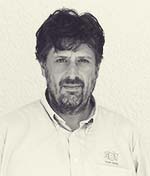Description
The success of any Condition Monitoring technology, trained and educated team and their approach is almost always presented or proved with a “good catch”. A “good catch” is usually considered as an anomaly detection, defect detection … and if it is an early-stage problem on critical equipment, well, that’s an “excellent catch”.
But is that what success looks like?
It is certainly a big, massive part of what needs to be reported under a strong spotlight, but not the only one. If that is how we report and measure success, then all the best teams in the industry would be fired pretty soon. Once the system is improved to the level when defects are rare, a “good catch” will not happen so often. So, there won’t be many spectacular findings to show.
The face of success is much bigger than that. A “good catch” is only a pair of smiling lips on that face.
How to recognize and define all aspects of success, and how to let others understand it and benefit from it. From “good catch” to dramatic waves of change affecting everyone in the organization.
Take the journey through presented cases.
Bio
 Born and raised in Zagreb, Croatia, Haris spent 20 years in wood processing and manufacturing before joining the Ultrasound, Condition Monitoring and Reliability journey as a member of the SDT Ultrasound Solutions team. Focused on the improvement of Reliability performance through all its aspects, particularly focused on Ultrasound technology, Condition Monitoring and, as a strong passion, Condition Based Lubrication. Haris is deeply involved in the improvement of Reliability Culture and proactive towards Lubrication excellence. Writing, publishing, and presenting, but most of all learning is what drives him. Proud member of SDT Ultrasound Solutions team where continuous improvement is a way of life.
Born and raised in Zagreb, Croatia, Haris spent 20 years in wood processing and manufacturing before joining the Ultrasound, Condition Monitoring and Reliability journey as a member of the SDT Ultrasound Solutions team. Focused on the improvement of Reliability performance through all its aspects, particularly focused on Ultrasound technology, Condition Monitoring and, as a strong passion, Condition Based Lubrication. Haris is deeply involved in the improvement of Reliability Culture and proactive towards Lubrication excellence. Writing, publishing, and presenting, but most of all learning is what drives him. Proud member of SDT Ultrasound Solutions team where continuous improvement is a way of life.
